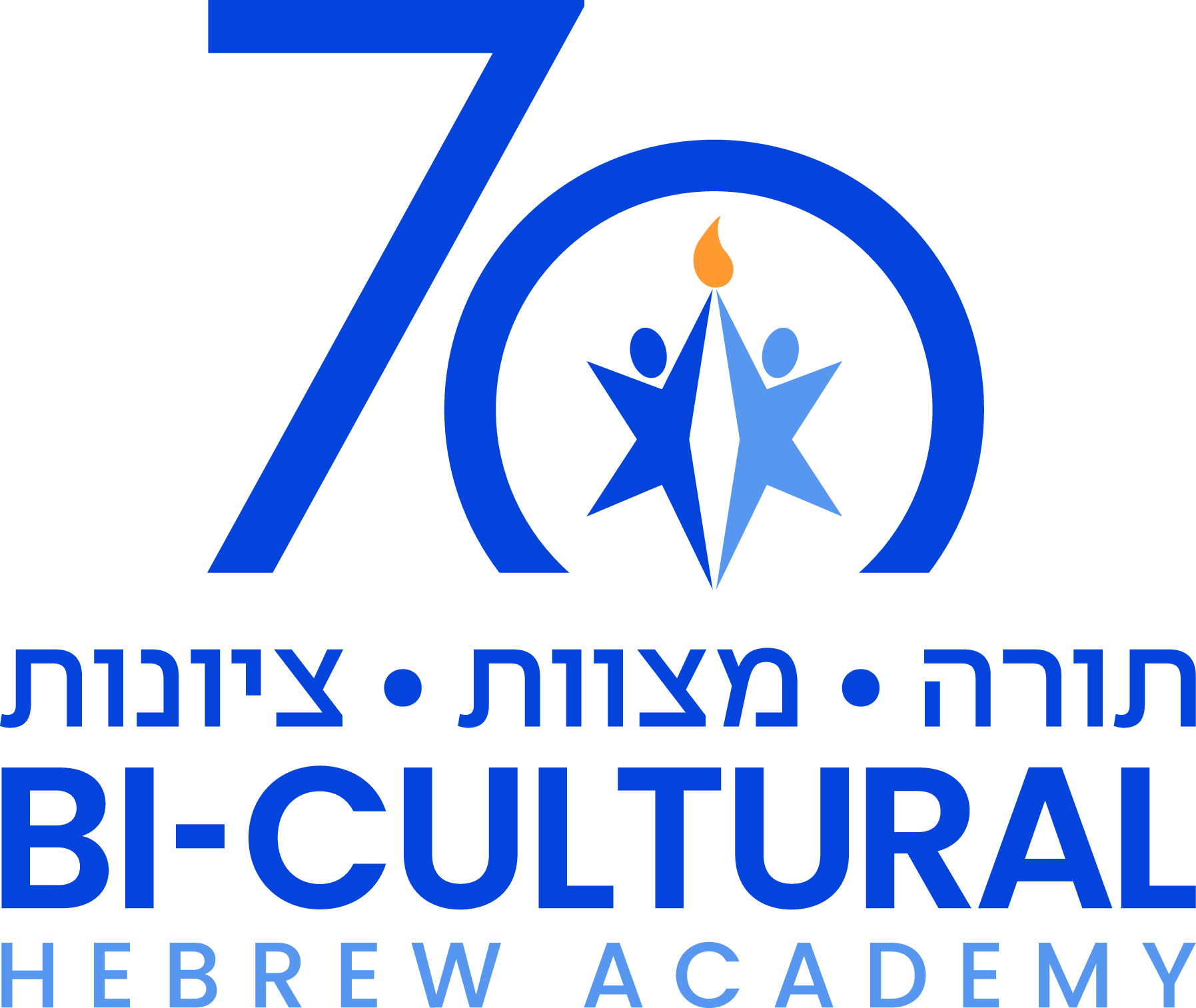
Chumash | חומש
Chumash is the foundational text of our tradition and a focus of Judaic studies from the earliest ages. Our youngest students learn Parsha stories each week through which they become familiar with the story of our heritage and learn life lessons from the actions of our ancestors. As students mature and develop Hebrew reading skills, they begin in-depth text study. Our teachers aim to balance an appreciation of the narrative with skill development and the building blocks of textual sensitivity. Another key component of our Chumash curriculum is the building of vocabulary and language skills, with a goal of developing independent and confident lifelong learners. As their fluency in reading Chumash increases, students begin to encounter parshanut (commentaries), beginning with Rashi in the fourth grade.

Curricular Goals
Grade 1
Chumash is taught primarily through the study of parshat hashavua in the first grade. Each week, the Torah portion is explored in-depth. Students become familiar with narrative, and begin to focus on the enduring understandings and ‘big ideas’ contained in the Torah text, using it as a springboard to share Jewish ideas and values. Chumash is taught using stories, pictures, and interactive activities, moving verse by verse in a deliberate and incremental structure. From the beginning, students are encouraged to read out loud and practice their reading skills on a consistent basis.
Grade 2
Second grade is a unique time in a students’ study of Chumash, because it represents the beginning of deep textual study. Students begin with conversations about the centrality and importance of Torah. Through discussions surrounding core questions like, what is the Torah, who wrote it, what is special about its language, context is provided for the texts they will learn. Students are introduced to the chain of our tradition and how the Torah has been passed down from generation to generation. Students are encouraged to see themselves as the next link in the chain of our Jewish heritage. Using the Chumash curriculum of “Lehavin Ulehaskil”, the children learn a great number of skills which will assist in a smooth transition from workbook-based learning to learning Chumash from the original text. Second graders learn how to locate perek and pasuk (chapter and verse). They learn how to identify and translate common prefixes, suffixes, and root words, utilizing the same shorashim that are taught in Tefillah. They develop a beginner’s biblical vocabulary and differentiate between feminine/masculine and plural/singular forms of nouns and verbs. Student learning is aided by Lehavin Ulehaskil’s extensive workbooks addressing a wide range of foundational skills, smartboard lessons, songs, charts, posters, and flashcards. By the end of the year, they can read and translate simpler Torah texts with support. The milestone occasion of receiving their first Chumashim is celebrated with Chagigat HaChumash.
Grade 3
Third graders review and develop the skills acquired in second grade in order to become fluent Hebrew readers and skilled Chumash learners through traditional textstudy, group, and partner activities. Through projects, drama, and art, the Chumash text comes to life and deep affective connections are made.
Students become more familiar with Chumash text and build the skills needed to decode and break down individual pesukim. Students continue to build a knowledge bank of important shorashim and learn to identify them in various formats (with different prefixes, suffixes, tenses, and usages). We balance the skills-based lessons with a clear understanding of the Torah narrative in Parshiyot Chayei Sarah, Toldot, and Vayeitzei in Sefer Breishit. We also discuss the relevance and application of the ideas of the pesukim to our daily lives. Chumash study is enhanced by the introduction of the study of Rashi. Students learn to recognize Rashi script letters and understand Rashi’s role as a commentary to Chumash.
Grade 4
We continue to develop Chumash study skills as students complete their learning of Sefer Bereishit. Aided by the Lehavin u’Lehaskil curriculum, students study the following Parshiyot in depth: וישלח, וישב, מקץ, ויגש, ויחי .The culmination of the Lehavin u’lehaskil Chumash curriculum happens in fourth grade and includes a review of all the skills learned since second grade. The Lehavin U’lehaskil methodology focuses on three different core areas: content, skills, and values. Students are encouraged to become lifelong Chumash independent learners as they continue to improve their reading, translating and Rashi skills. Students expand their critical thinking skills as they learn to ask what could be troubling Rashi. By learning to locate and recognize the dibbur haMatchil to a particular comment, the student’s repertoire of textual skills for Chumash study is vastly expanded.
In addition to our Chumash curriculum, students learn the Parshat Hashavua (weekly Torah portion) in greater detail and depth. Students will review the weekly Parsha and learn a Dvar Torah relating to a particular theme each week.



